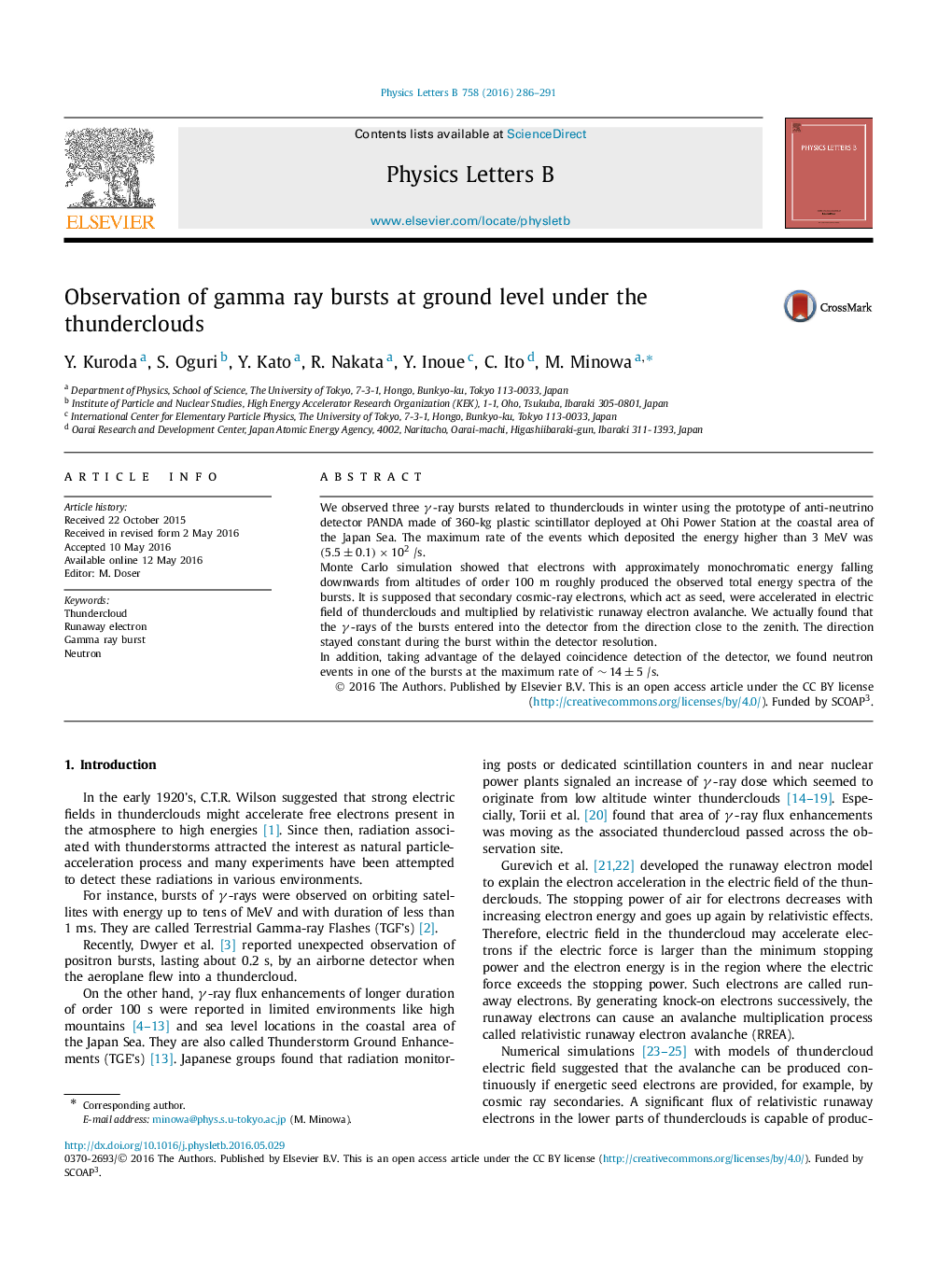| کد مقاله | کد نشریه | سال انتشار | مقاله انگلیسی | نسخه تمام متن |
|---|---|---|---|---|
| 1850128 | 1528798 | 2016 | 6 صفحه PDF | دانلود رایگان |
We observed three γ -ray bursts related to thunderclouds in winter using the prototype of anti-neutrino detector PANDA made of 360-kg plastic scintillator deployed at Ohi Power Station at the coastal area of the Japan Sea. The maximum rate of the events which deposited the energy higher than 3 MeV was (5.5±0.1)×102 /s(5.5±0.1)×102 /s.Monte Carlo simulation showed that electrons with approximately monochromatic energy falling downwards from altitudes of order 100 m roughly produced the observed total energy spectra of the bursts. It is supposed that secondary cosmic-ray electrons, which act as seed, were accelerated in electric field of thunderclouds and multiplied by relativistic runaway electron avalanche. We actually found that the γ-rays of the bursts entered into the detector from the direction close to the zenith. The direction stayed constant during the burst within the detector resolution.In addition, taking advantage of the delayed coincidence detection of the detector, we found neutron events in one of the bursts at the maximum rate of ∼14±5 /s∼14±5 /s.
Journal: Physics Letters B - Volume 758, 10 July 2016, Pages 286–291
